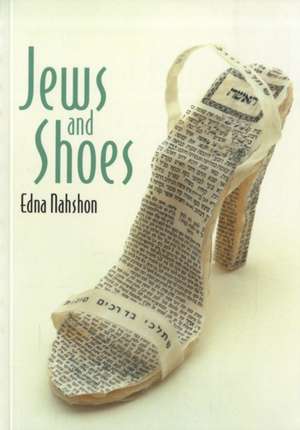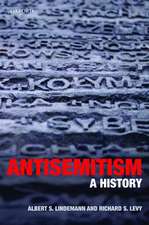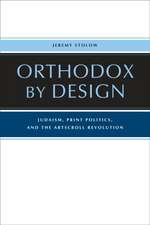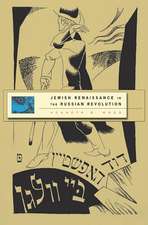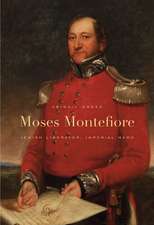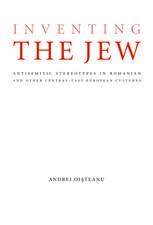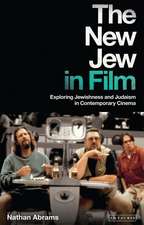Jews and Shoes
Editat de Edna Nahshonen Limba Engleză Paperback – 31 iul 2008
| Toate formatele și edițiile | Preț | Express |
|---|---|---|
| Paperback (1) | 240.04 lei 3-5 săpt. | |
| Bloomsbury Publishing – 31 iul 2008 | 240.04 lei 3-5 săpt. | |
| Hardback (1) | 716.96 lei 6-8 săpt. | |
| Bloomsbury Publishing – 31 iul 2008 | 716.96 lei 6-8 săpt. |
Preț: 240.04 lei
Preț vechi: 274.70 lei
-13% Nou
Puncte Express: 360
Preț estimativ în valută:
45.94€ • 49.88$ • 38.59£
45.94€ • 49.88$ • 38.59£
Carte disponibilă
Livrare economică 01-15 aprilie
Preluare comenzi: 021 569.72.76
Specificații
ISBN-13: 9781847880505
ISBN-10: 1847880509
Pagini: 338
Ilustrații: 50 b&w illustrations, bibliography, index
Dimensiuni: 172 x 244 x 19 mm
Greutate: 0.48 kg
Ediția:First.
Editura: Bloomsbury Publishing
Colecția Berg Publishers
Locul publicării:London, United Kingdom
ISBN-10: 1847880509
Pagini: 338
Ilustrații: 50 b&w illustrations, bibliography, index
Dimensiuni: 172 x 244 x 19 mm
Greutate: 0.48 kg
Ediția:First.
Editura: Bloomsbury Publishing
Colecția Berg Publishers
Locul publicării:London, United Kingdom
Caracteristici
Also available in hardback, 9781847880499 £55.00 (August, 2008)
Notă biografică
Edna Nahshon is Associate Professor of Hebrew at the Jewish Theological Seminary and Senior Associate, Centre of Hebrew and Jewish Studies, Oxford University.
Cuprins
1. Jews and Shoes, Edna NahshonPart 1: Religion and the Bible2. The Biblical Shoe: 'Eschewing Footwear: The Call of Moses as Biblical Archetype', Ora Prouser3. The Halitzah Shoe: Between Female Subjugation and Symbolic Emasculation, Catherine Hezser4. The Tombstone Shoe: Shoe-Shaped Tombstones in Jewish Cemeteries in the Ukraine, Rivka Parciack5. The Israeli Shoe: Biblical Sandals and Native Israeli Identity, Orna Ben-MeirPart 2: Memories and Commemoration6. The Shtetl Shoe: How to Make a Shoe, Mayer Kirshenblatt and Barbara Kirshenblatt-Gimblett7. The Folkloristic Shoe: Shoes and Shoemakers in Yiddish Language and Folklore, Robert A. Rothstein8. The Holocaust Shoe: Untying Memory: Shoes as Holocaust Memorial Experience, Jeffrey FeldmanPart 3: Ideology and Economics9. Wanderer's Shoe: The Cobbler's Penalty: The Wandering Jew in Search for Salvation, Shelly Zer-Zion10. The Equalizing Shoe: Shoes as a Symbol of Equality in the Jewish Society in Palestine during the First Half of the Twentieth Century, Ayala RazPart 4: Theatre, Art and Film11. The Fetishist's Shoe: Poems of Pedal Atrocity: Sexuality, Ethnicity, and Religion in the Art of Bruno Schulz, Andrew Ingall 12. The Artist's Shoe: Digging Into the Jewish Roots of Shoe-Field, Sonya Rapoport13. The Theatrical Shoe: The Utterance of Shoemaking: Cobblers on the Israeli Stage, Dorit Yerushalmi14. The Cinematic Shoe: Ernst Lubitsch's East European Touch in Pinkus's Shoe Palace, Jeanette Malkin
Recenzii
After reading Jews and Shoes, one will no longer view that essential part of the wardrobe as a mere item of necessity.
This highly original volume makes itself indispensable as much through the extraordinary range of perspectives as through the lucidity and insights of the individual papers. It highlights how an appreciation of biblical roots and later religious commentary gives us an understanding of later folklore, theatrical and literary creativity, and ultimately contemporary politics.
Moving with ease from the sacred to the profane, from canonical works to the realm of public culture, from social to cultural history, Jews and Shoes invests great significance to what might seem at first blush to be utterly ordinary. No one, after reading this book, will however think of shoes as just 'being there.' Nahshon's Jewish shoes shows how everything has a history worth analyzing and reading about.
Jews and Shoes is a remarkable and wonderful offbeat collection of pieces on shoes (or the lack of them) from Moses' refusal to wear them to Ernst Lubitsch's evocation of WWI Berlin's Jewish world of shoe selling. A wild mix of cultural history (Barbara Kirschenblatt-Gimlett and her father Mayer's images of shoe making), anthropology (Rivka Parciack on Jewish tombstones in the shape of shoes), and literary study (Andrew Ingall on Bruno Schulz), this is a great book of everyone who wears shoes, is Jewish or is Jewish and wears shoes.
From ancient biblical references, to contemporary Jewish law, the book takes the reader on a journey that highlights the religious, social and political significance of footwear in Jewish life.
I, too, was amazed at how this "footnote" of a topic yielded so much as a survey for the Semites.
A fascinating new book provides a shoe and tell of the many connections between footwear and the Jewish people.
I found the essays engaging and, at times, absolutely fascinating ... I applaud the volume, especially its creativity and new insights, as a lively contribution to Jewish studies. Try it on for size. I did, and it was a wonderful, delightful stroll.
This book provides valuable lenses through which to examine the shoe in Jewish cultural and religious history: as the social biography of an ever-present object, as an historic examination of Jews in society, as a themed sampling of significant Jewish literary and artistic expressions, and as a material entrée into worlds of immateriality. Nashon moves the reader through cultural histories, disparate lands, and artistic imaginations to track the footprints that Jews have made on the history of the shoe.
This highly original volume makes itself indispensable as much through the extraordinary range of perspectives as through the lucidity and insights of the individual papers. It highlights how an appreciation of biblical roots and later religious commentary gives us an understanding of later folklore, theatrical and literary creativity, and ultimately contemporary politics.
Moving with ease from the sacred to the profane, from canonical works to the realm of public culture, from social to cultural history, Jews and Shoes invests great significance to what might seem at first blush to be utterly ordinary. No one, after reading this book, will however think of shoes as just 'being there.' Nahshon's Jewish shoes shows how everything has a history worth analyzing and reading about.
Jews and Shoes is a remarkable and wonderful offbeat collection of pieces on shoes (or the lack of them) from Moses' refusal to wear them to Ernst Lubitsch's evocation of WWI Berlin's Jewish world of shoe selling. A wild mix of cultural history (Barbara Kirschenblatt-Gimlett and her father Mayer's images of shoe making), anthropology (Rivka Parciack on Jewish tombstones in the shape of shoes), and literary study (Andrew Ingall on Bruno Schulz), this is a great book of everyone who wears shoes, is Jewish or is Jewish and wears shoes.
From ancient biblical references, to contemporary Jewish law, the book takes the reader on a journey that highlights the religious, social and political significance of footwear in Jewish life.
I, too, was amazed at how this "footnote" of a topic yielded so much as a survey for the Semites.
A fascinating new book provides a shoe and tell of the many connections between footwear and the Jewish people.
I found the essays engaging and, at times, absolutely fascinating ... I applaud the volume, especially its creativity and new insights, as a lively contribution to Jewish studies. Try it on for size. I did, and it was a wonderful, delightful stroll.
This book provides valuable lenses through which to examine the shoe in Jewish cultural and religious history: as the social biography of an ever-present object, as an historic examination of Jews in society, as a themed sampling of significant Jewish literary and artistic expressions, and as a material entrée into worlds of immateriality. Nashon moves the reader through cultural histories, disparate lands, and artistic imaginations to track the footprints that Jews have made on the history of the shoe.
Descriere
Descriere de la o altă ediție sau format:
Takes a look at the makings and meanings of shoes, cobblers, and barefootedness in Jewish experience. This book shows how shoes convey theological, social, and economic concepts, and as such are subjects for inquiry within a range of cultural, artistic, and historic contexts.
Takes a look at the makings and meanings of shoes, cobblers, and barefootedness in Jewish experience. This book shows how shoes convey theological, social, and economic concepts, and as such are subjects for inquiry within a range of cultural, artistic, and historic contexts.
